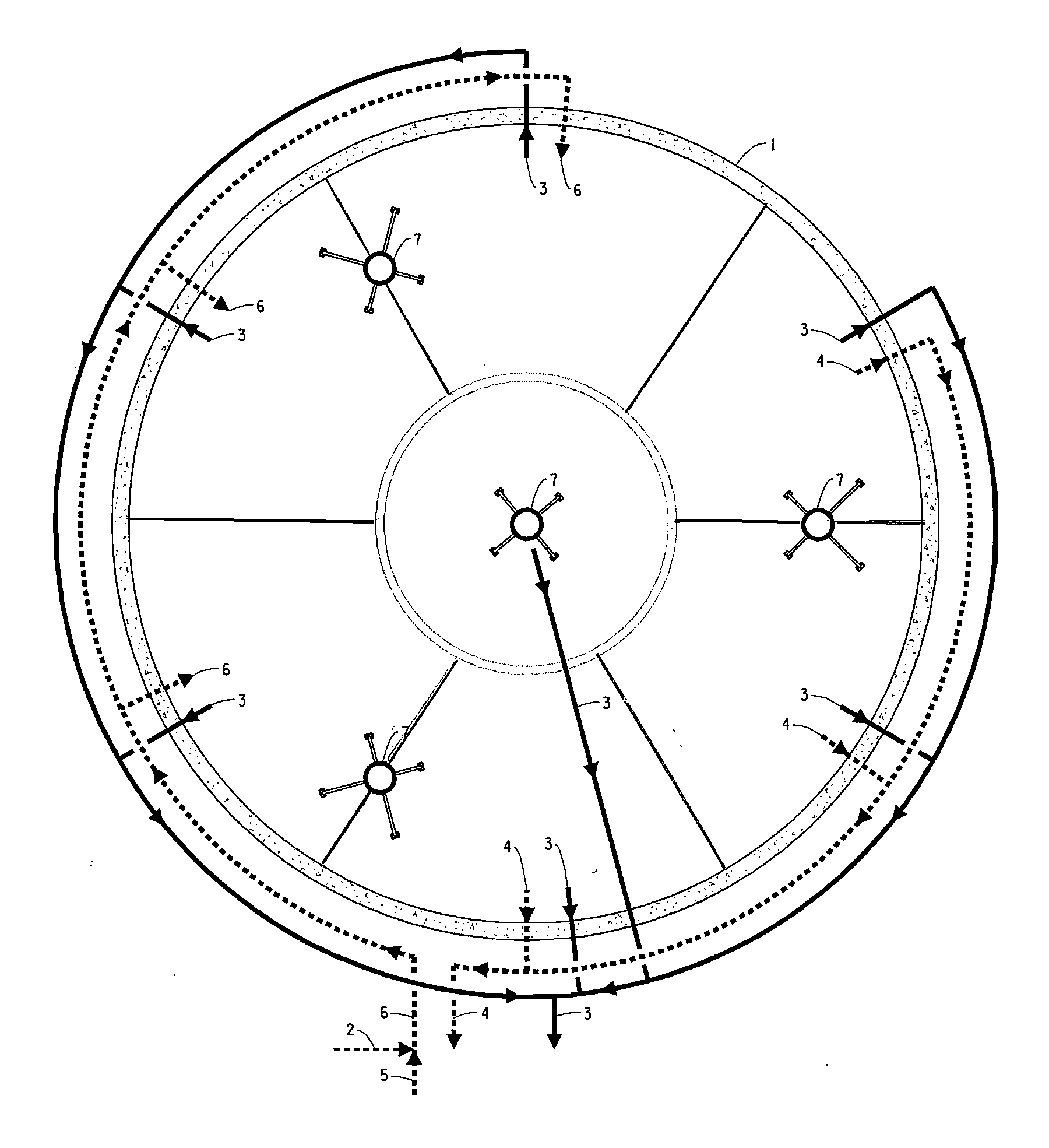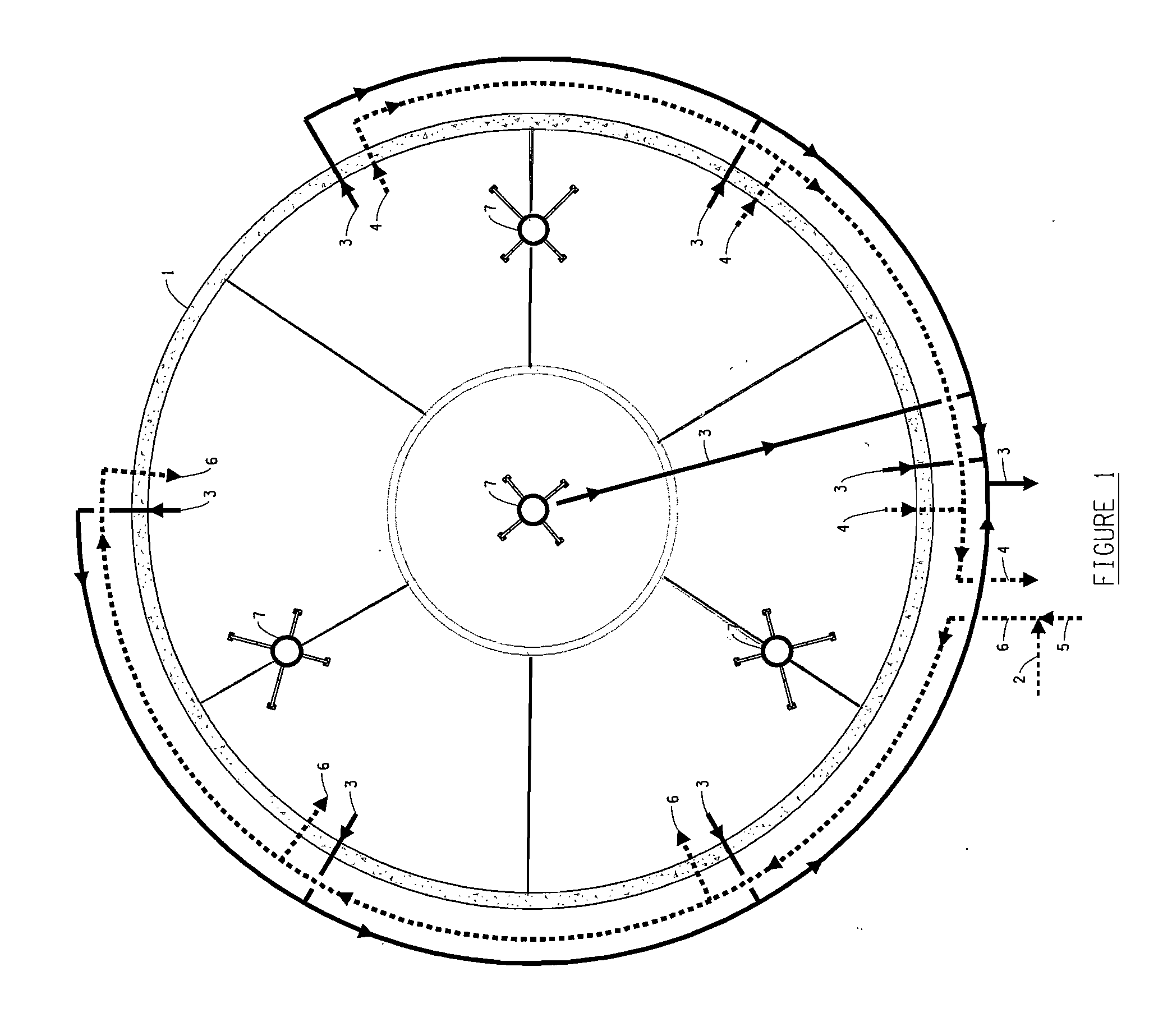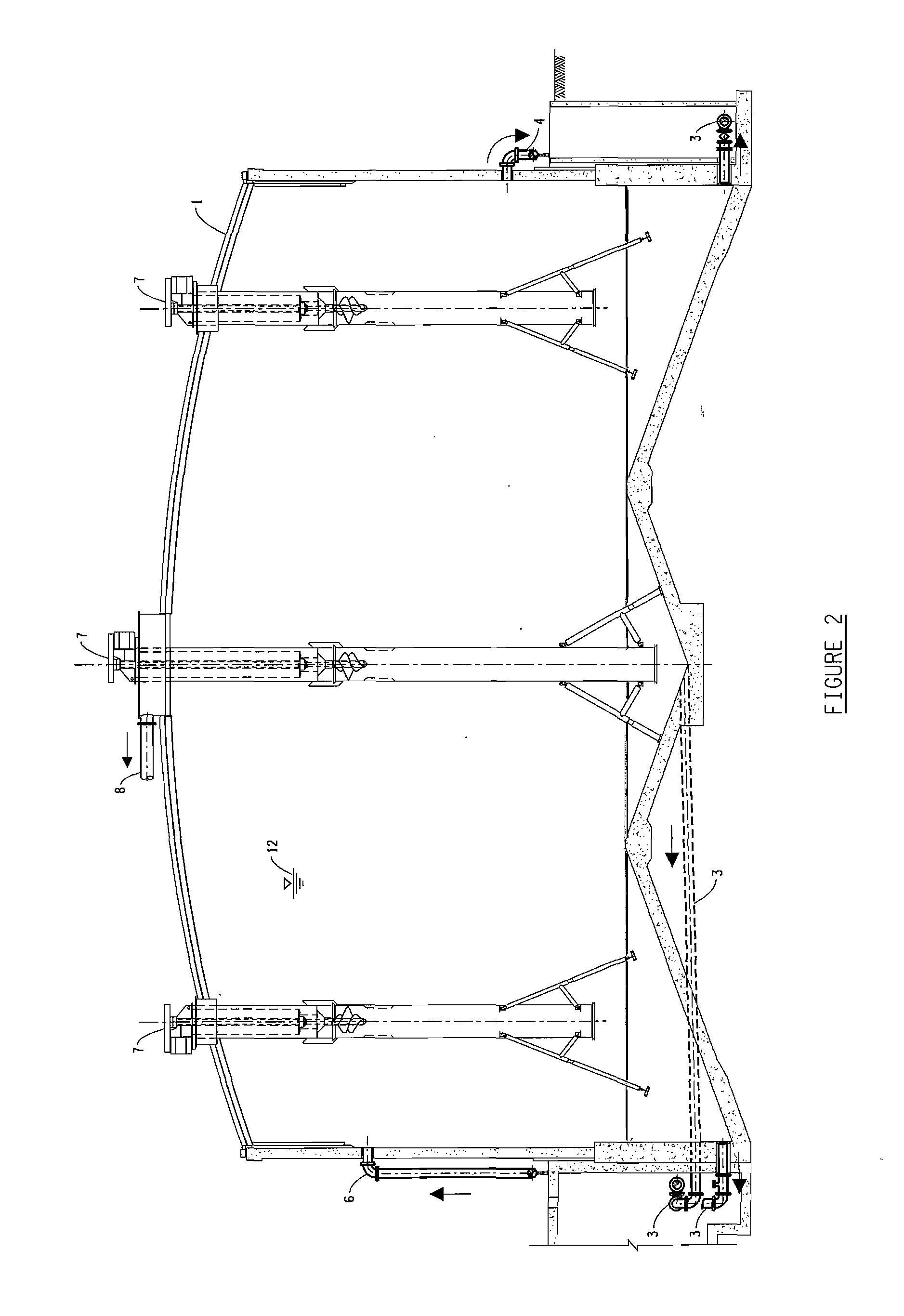Low Mean Cell Residence Time Anaerobic Digestion Process
an anaerobic digestion and mean cell technology, applied in the field of low mean cell residence time anaerobic digestion process, can solve the problems of increasing ph and alkalinity, increasing reaction rate, and reducing reaction rate or stopping altogether, so as to reduce the mean cell residence time and increase the digester capacity
- Summary
- Abstract
- Description
- Claims
- Application Information
AI Technical Summary
Benefits of technology
Problems solved by technology
Method used
Image
Examples
Embodiment Construction
[0018]The sludge digestion process of this invention requires introducing feed sludge having a total solids concentration of less than or equal to 10% to a completely-mixed, continuously-stirred, sealed, anaerobic digester 1, and drawing off sludge from the digester 1 at a rate such that the mean cell residence time for the sludge in the digester 1 is greater than or equal to 10 days, and less than 15 days, while preferably maintaining the temperature of the sludge in the digester 1 in the range of from 47° C. to 53° C., to produce treated sludge having: a volatile solids content that is 38% less than the volatile solids content of the feed sludge introduced to the digester 1, a reduced fecal coliform content that is a 2 log (base 10) reduction from the feed sludge introduced to the digester 1, and where a geometric mean of seven samples of the treated sludge shows that there is no more than 2,000,000 most probable number / gram total solids (dry weight basis) of fecal coliform in the...
PUM
| Property | Measurement | Unit |
|---|---|---|
| mean cell residence time | aaaaa | aaaaa |
| mean cell residence time | aaaaa | aaaaa |
| temperature | aaaaa | aaaaa |
Abstract
Description
Claims
Application Information
 Login to View More
Login to View More - R&D
- Intellectual Property
- Life Sciences
- Materials
- Tech Scout
- Unparalleled Data Quality
- Higher Quality Content
- 60% Fewer Hallucinations
Browse by: Latest US Patents, China's latest patents, Technical Efficacy Thesaurus, Application Domain, Technology Topic, Popular Technical Reports.
© 2025 PatSnap. All rights reserved.Legal|Privacy policy|Modern Slavery Act Transparency Statement|Sitemap|About US| Contact US: help@patsnap.com



